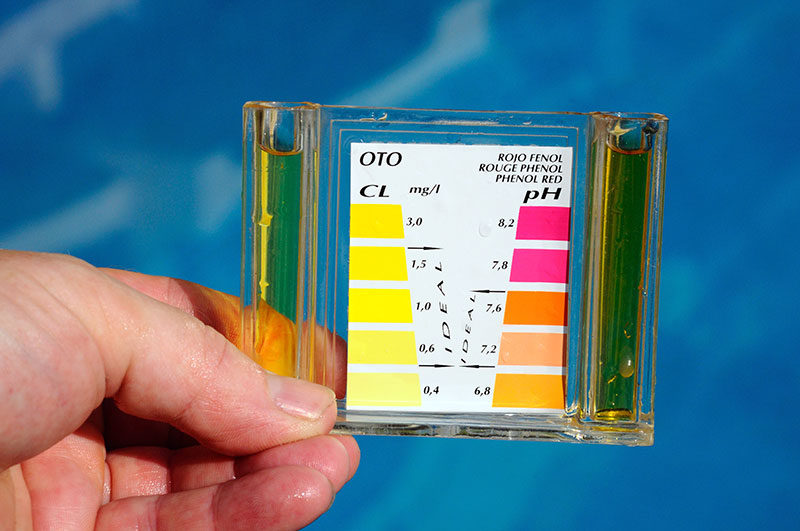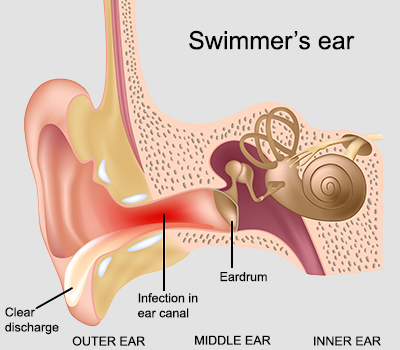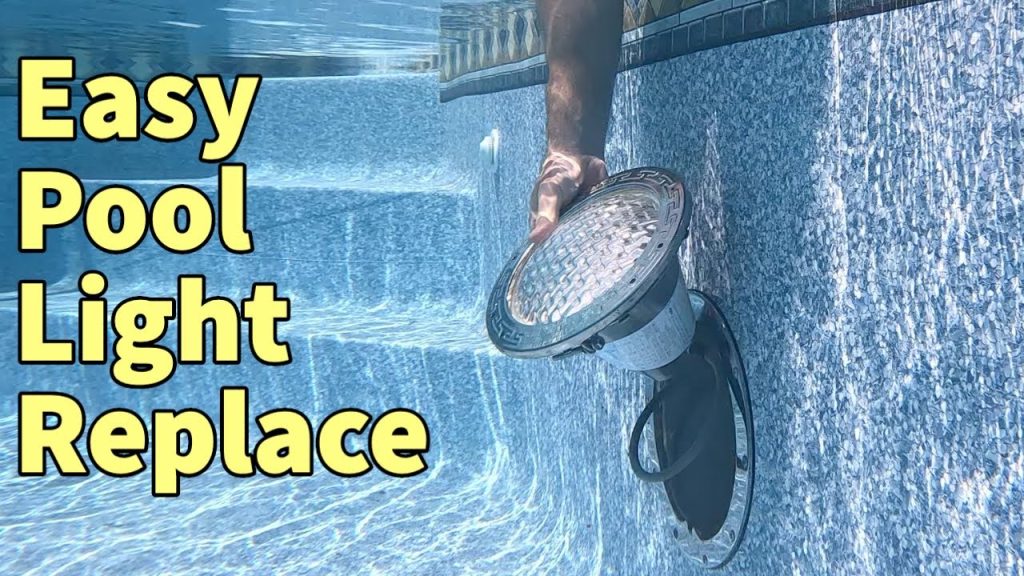To lower pH in a swimming pool, you need to add acid. This might sound complicated, but it’s actually quite straightforward.
Maintaining the right pH balance in your pool is crucial for keeping the water clean and safe to swim in. A swimming pool’s pH level can affect the comfort of swimmers, the efficiency of the chlorine, and the longevity of the pool equipment.
If the pH is too high, it can lead to cloudy water and scaling on pool surfaces. It can also cause skin and eye irritation for swimmers. Lowering the pH level is essential to ensure a pleasant swimming experience and proper pool maintenance. In this guide, we will explore simple steps to bring down the pH level in your pool effectively.

Credit: www.angi.com
Introduction To Pool Ph Levels
Maintaining the right pH level in your swimming pool is vital. Pool pH levels affect water quality and swimmer comfort. Understanding pH levels can help keep your pool safe and enjoyable.
Importance Of Ph Balance
pH balance determines how acidic or basic the pool water is. An unbalanced pH can cause various issues. It can irritate the skin and eyes of swimmers. It can also damage pool equipment.
Ideal Ph Range For Pools
The ideal pH range for swimming pools is between 7.2 and 7.6. This range keeps the water comfortable for swimmers. It also helps in maintaining the pool’s structure and equipment.
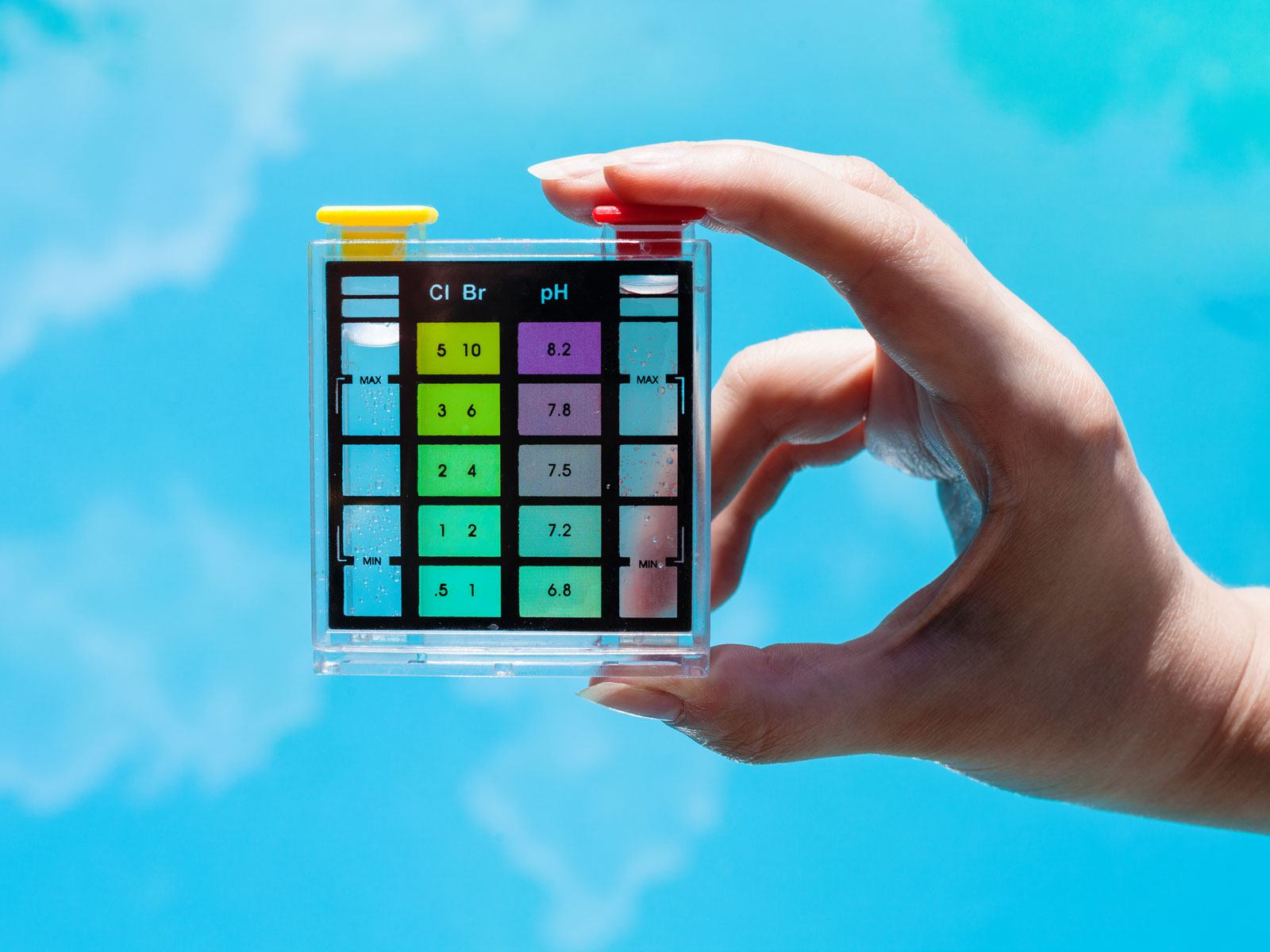
Credit: www.watersidepoolscapes.com
Causes Of High Ph Levels
Understanding the causes of high pH levels in a swimming pool is vital for maintaining water quality. High pH levels can make the water cloudy and uncomfortable. This section will explain the common causes of high pH levels.
Chemical Imbalances
Chemical imbalances are a primary cause of high pH levels in swimming pools. The pool’s pH level measures the acidity or basicity of the water. When the pH level is too high, the water becomes too basic.
- High Alkalinity: If the pool’s total alkalinity is high, the pH level will also increase. Alkalinity acts as a buffer for the pH, so when it’s high, it prevents the pH from dropping.
- Chlorine: Using certain types of chlorine, such as sodium hypochlorite, can raise the pH level. Liquid chlorine tends to have a higher pH.
- Calcium Hardness: High levels of calcium hardness can contribute to high pH. This often happens in areas with hard water.
Environmental Factors
Environmental factors can also affect the pH levels in your pool. These factors are often outside your control but understanding them can help you manage your pool better.
- Rainwater: Rain can alter your pool’s pH level. Acid rain can lower pH, while regular rain can raise it.
- Debris: Leaves, grass, and other organic debris can affect the pH level. As they decompose, they can increase the pH.
- Sunlight: The sun’s UV rays can break down chlorine, leading to chemical imbalances. This can indirectly cause higher pH levels.
By understanding these causes, you can take steps to prevent high pH levels. Regular testing and maintenance are key. Keep your pool balanced for a comfortable and safe swimming experience.
Testing Pool Ph Levels
Maintaining the right pH level in your swimming pool is essential. It ensures the water is safe and comfortable for swimmers. Testing pool pH levels is the first step in managing your pool’s chemistry. Here’s how to do it effectively.
Types Of Ph Test Kits
There are several types of pH test kits available. Each has its own benefits and limitations.
| Type | Pros | Cons |
|---|---|---|
| Test Strips | Easy to use, quick results | Less accurate, single-use |
| Liquid Test Kits | More accurate, reusable | More steps, takes longer |
| Digital Testers | Highly accurate, reusable | Expensive, requires calibration |
How To Use Ph Test Kits
Using a pH test kit is simple. Follow these steps to get accurate results:
- Collect a Water Sample: Use a clean container to collect water from elbow-deep.
- Follow Kit Instructions: Read the instructions carefully. Each kit has specific steps.
- Test the Sample: Add the test solution or dip the strip in the water.
- Compare Results: Match the color change to the provided chart.
Consistent testing helps maintain a healthy pool environment. It’s a small step that makes a big difference.
Using Muriatic Acid
Maintaining the proper pH level in your swimming pool is crucial. Muriatic acid is a common solution to lower the pH. It is effective and affordable. Let’s explore how to use muriatic acid to balance your pool’s pH levels.
Benefits Of Muriatic Acid
- Cost-effective: Muriatic acid is inexpensive compared to other pH adjusters.
- Readily available: You can find it at most hardware and pool supply stores.
- Efficient: It quickly lowers the pH, making it ideal for urgent adjustments.
- Versatile: Suitable for various types of pools, including saltwater pools.
Steps To Add Muriatic Acid
- Test the pH level: Use a pool test kit to measure the current pH.
- Calculate the amount needed: Refer to the product instructions for dosage.
- Wear protective gear: Use gloves and goggles to protect yourself.
- Dilute the acid: Mix the acid with water in a bucket. Use a 10:1 water to acid ratio.
- Add to pool: Pour the diluted solution around the pool edges. Do this slowly to avoid splashing.
- Wait and test: Let the pool circulate for at least 4 hours. Then, retest the pH level.
Following these steps ensures a balanced pool pH. This creates a safe and enjoyable swimming environment.
Using Sodium Bisulfate
Maintaining the proper pH level in your swimming pool is crucial for the comfort of swimmers and the longevity of your pool equipment. One effective method to lower pH levels is using Sodium Bisulfate. This compound is a dry acid that is easy to handle and apply.
Benefits Of Sodium Bisulfate
- Ease of Use: Sodium Bisulfate is a dry acid, making it simple to measure and apply.
- Safety: Safer to handle compared to liquid acids like muriatic acid.
- Efficiency: Quickly lowers the pH level in swimming pools.
- Cost-Effective: Generally affordable and readily available at pool supply stores.
Steps To Add Sodium Bisulfate
- Test the Water: Use a pH testing kit to check the current pH level.
- Calculate the Dosage: Refer to the product label to determine the correct amount needed.
- Wear Protective Gear: Put on gloves and goggles to protect your skin and eyes.
- Measure the Sodium Bisulfate: Use a clean, dry scoop to measure the required amount.
- Distribute Evenly: Sprinkle the Sodium Bisulfate around the perimeter of the pool.
- Circulate the Water: Run the pool pump for at least 2 hours to ensure even distribution.
- Retest the Water: Check the pH level again after 24 hours. Repeat the process if necessary.
Natural Methods To Lower Ph
Maintaining the right pH in your swimming pool is essential for a safe and enjoyable swim. High pH levels can cause skin irritation and cloudy water. Instead of using chemicals, you can try natural methods to lower the pH. These methods are safe, cost-effective, and eco-friendly.
Using Vinegar
Vinegar is a common household item that can help lower the pH in your pool. It is safe and readily available. Here’s how you can use vinegar to lower the pH:
- Measure the current pH level using a test kit.
- Add one gallon of white vinegar for every 10,000 gallons of water.
- Distribute the vinegar evenly around the pool.
- Wait for 24 hours and test the pH level again.
- Repeat the process if necessary until the pH reaches the desired level.
Note: Vinegar works best for small to moderate pH adjustments.
Using Lemon Juice
Lemon juice is another natural acid that can help lower the pH in your pool. It is effective and leaves a pleasant scent. To use lemon juice:
- Test the current pH level of the pool water.
- Add one cup of lemon juice for every 2,000 gallons of water.
- Pour the lemon juice slowly into the pool, moving around the edge.
- Allow the pool pump to run for several hours.
- Recheck the pH level and add more lemon juice if needed.
Tip: Lemon juice is ideal for small pH corrections and can be a great alternative to chemical acids.
Maintaining Ph Balance
Keeping your swimming pool’s pH balance in check is crucial. It ensures a safe and enjoyable swim. An imbalanced pH can cause skin and eye irritation. It can also damage your pool equipment. Regular maintenance helps you avoid these issues.
Regular Testing
Regular testing of your pool’s pH level is essential. You should aim to test your pool water at least twice a week. Use a reliable pH testing kit. These kits are easy to find and simple to use. Follow the instructions carefully. Compare the test results with the ideal pH range of 7.2 to 7.8. If the pH is too high, take steps to lower it. Consistent testing helps you catch imbalances early. This makes adjustments easier and more effective.
Adjusting Alkalinity
Adjusting the alkalinity of your pool water helps maintain pH balance. Alkalinity acts as a buffer for pH levels. It keeps them stable. The ideal alkalinity range is 80 to 120 parts per million (ppm). If your alkalinity is too low, the pH can fluctuate rapidly. To increase alkalinity, add sodium bicarbonate (baking soda). Follow the product instructions for the correct amount. If alkalinity is too high, the pH will be difficult to lower. Add muriatic acid or sodium bisulfate to decrease alkalinity. Again, follow the product instructions carefully.
Adjusting alkalinity first makes it easier to stabilize pH levels. This step is crucial for effective pH management.
| Action | Product | Ideal Range |
|---|---|---|
| Increase Alkalinity | Sodium Bicarbonate | 80-120 ppm |
| Decrease Alkalinity | Muriatic Acid or Sodium Bisulfate | 80-120 ppm |
Follow these steps to maintain a balanced pH. Regular testing and adjusting alkalinity are key. Your pool will be safe and enjoyable for swimming.
Common Mistakes To Avoid
Maintaining the correct pH in your swimming pool is crucial. Yet, many pool owners make common errors that can lead to problems. Here are some pitfalls to avoid when lowering the pH in your pool.
Over-correcting Ph
One of the most frequent mistakes is over-correcting pH. Adding too much acid too quickly can cause the pH to drop below the desired range. This can make the water too acidic, which can be harmful to both swimmers and pool equipment.
- Always add acid slowly.
- Measure pH levels after each addition.
- Wait at least 4 hours before retesting.
Using a pH test kit can help you monitor changes accurately. This step-by-step approach ensures you do not over-correct the pH.
Ignoring Other Chemical Levels
Another mistake is ignoring other chemical levels in the pool. pH balance is only one part of the pool’s chemistry. Focusing solely on pH can lead to imbalances in other areas.
| Chemical | Optimal Range |
|---|---|
| Alkalinity | 80-120 ppm |
| Chlorine | 1-3 ppm |
| Calcium Hardness | 200-400 ppm |
Regularly test and adjust all chemical levels. This ensures a balanced and safe pool environment. Using a test kit that measures multiple chemicals can be very beneficial.
By avoiding these common mistakes, you can maintain a healthy and enjoyable swimming pool. Remember to monitor your pool’s overall chemistry, not just the pH.
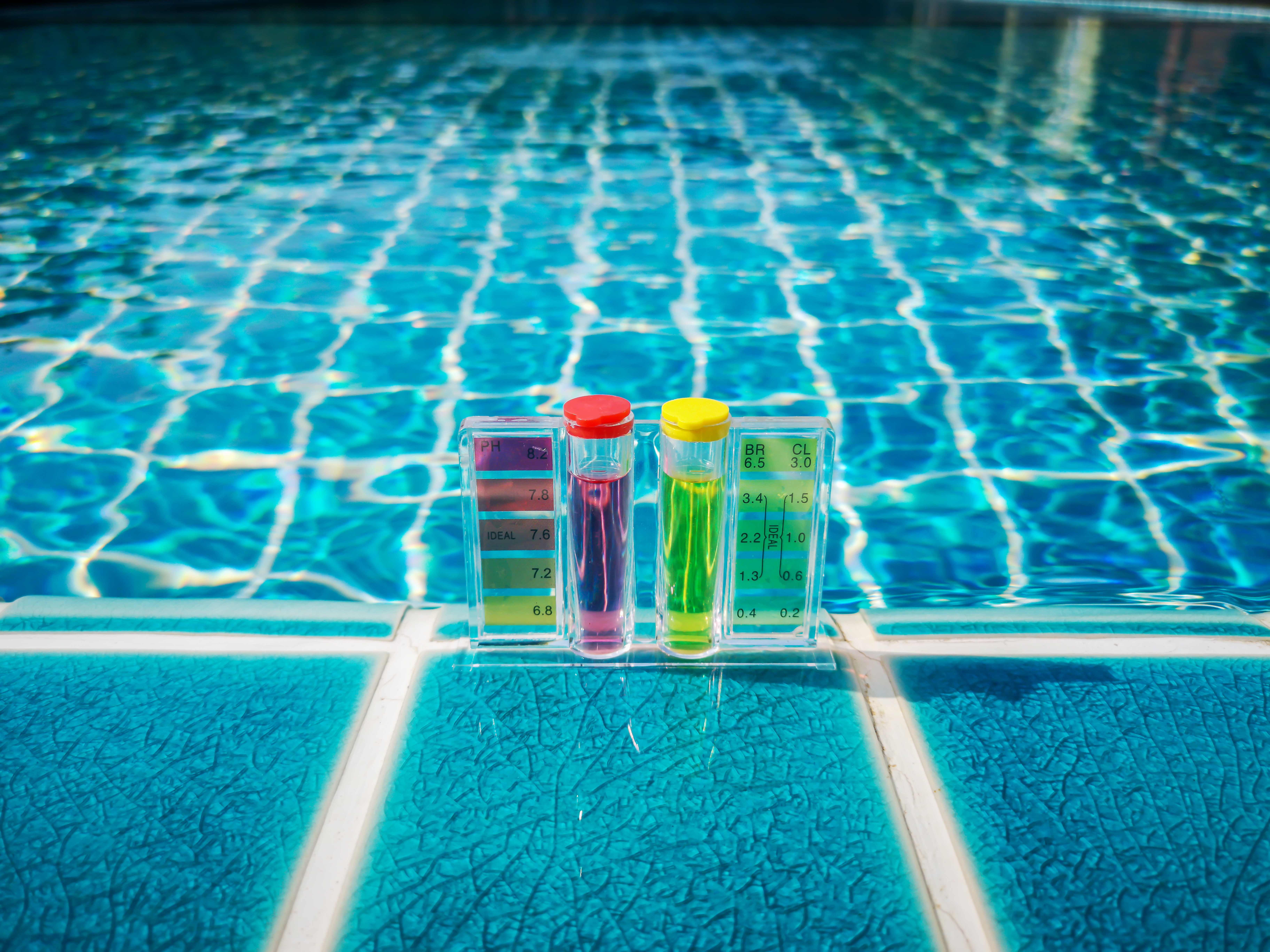
Credit: www.armandhammer.com
Frequently Asked Questions
What Is The Ideal Ph Level For A Swimming Pool?
The ideal pH level for a swimming pool is between 7. 2 and 7. 8. This range ensures optimal comfort for swimmers and effective chlorine disinfection.
Why Is High Ph Bad For Pools?
High pH levels can cause scaling on pool surfaces and equipment. It can also reduce chlorine effectiveness, leading to cloudy water and algae growth.
How Can I Test My Pool’s Ph Level?
You can test your pool’s pH level using test strips or a digital pH meter. Follow the manufacturer’s instructions for accurate results.
What Chemicals Lower Ph In A Pool?
Muriatic acid and sodium bisulfate are commonly used to lower pH in swimming pools. Always follow the product instructions for safe use.
Conclusion
Maintaining the right pH in your swimming pool is crucial. Lowering pH helps keep the water safe and comfortable. Follow simple steps to adjust the pH levels. Use the right chemicals and tools. Regular testing ensures balance. Your pool stays clean and enjoyable.
Enjoy swimming in a well-maintained pool.

